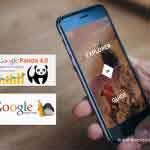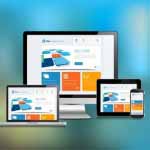Website Layout Designing without Using CSS Floats
Those involved in the field of web designing over quite a period of time must be well aware of CSS float property. The CSS float property gained huge popularity when web developers were starting to shift their focus to HTML layouts without using tables. One of the major reasons behind the huge acceptance of this property was that it allowed the incorporation of table like columns without the need to use tables. However, developers faced a lot of confusion and frustration because of this property especially when floated elements were left uncleared. Uncleared floats result in several types of issues like complete inaccessibility, sloppy aesthetics and more. Though, for small projects it is not that difficult to handle a float issue but, for those offering responsive web design services for large projects, it can certainly turn out to be a major issue adding to the overall cost and time of the project.
The ideas of website layout design without CSS Floats are as follows:-
Flexbox – A Better Alternative
The biggest problem faced by developers while using floats is their unpredictability. This especially true for those new in the field and it takes some time to master the art of using floats. In order to control the behavior of floats, excess code is necessary which in itself, is a major issue. When it comes to responsive web design services, this turns out to be a major problem for developers where sizes are constantly contracting or expanding and changing depending on the space available.
Flexbox Box Module comes as a new CSS3 technique which is changing web layout practices. The biggest benefit of Flexbox is that it offers an additional layout system apart from those that already exist in CSS. A completely different method is being provided by Flexbox to layout websites and has the capability to make grid based multi-column layouts extremely easier. Developers have the freedom to lay out child elements in Flexbox in any direction they want and even have flexible dimensions for adapting to screen space. As a result of that, positioning child elements becomes a lot easier and developers can easily achieve complex layouts with cleaner code.
Using Inline Block
Inline block happens to be a display value allowing developers to display elements in same line all the while taking into consideration important style values like padding and margins, height and width as well as vertical aligning. It all adds up to some useful display value when developers want to align elements within horizontal rows like column layouts or navigation menus. The primary advantage of using inline block is that elements remain in normal flow in a document. This helps to remove the clear fix issue and collapsing parent, while position values can still be applied to inline block parent elements such as text align: center. A photography portfolio clearly shows how inline block scores over floated elements. The fact that inline block helps to keep elements in natural flow results in rows being displayed like the way they should and developers can still make use of vertical align for lining up images from the middle, bottom or top. Float can only prove to be useful when every image is of the same height which is not the case most of the time.
Why Move to Some Other Method or Technique?
There are lots of developers who must be thinking that why change a method that is working absolutely fine? The thing is, there are quite a few things that float is not capable of doing and can make the jobs of those providing responsive web design services even more complicated and difficult.
For example:
• Often at times, developers feel the need to incorporate the much elusive “centered-float” which requires multiple CSS properties and additional markup to achieve. However, if one makes use of the display method, it can be easily achieved through the application of text-align: center.
• Another major advantage of making use of the display method is that, content can be vertically aligned. Though, developers have the option of using positioning with negative margin/translate technique but, a dynamic, responsive environment definitely makes it a bad choice. But, with the display method this can again be achieved quite easily by simply applying vertical-align: middle.
Bottom line :
There is no doubt about the fact that float property often at times turns out to be the best possible option but, developers need to give a good thought to see whether the same task can be achieved through some other technique. The primary aim is to make sure that responsive web design services are carried out in a hassle free, fast and easy manner, be it by using float property, inline block or some other method. With the rapid growth and development of technology, more such techniques are expected to emerge over the coming years.











Maybe you could write subsequent articles relating to this article.
I want to learn more issues about it!